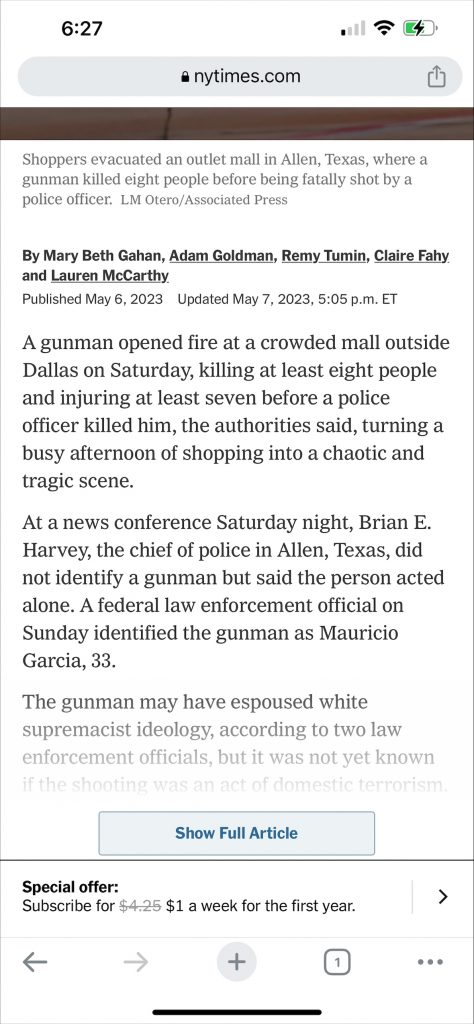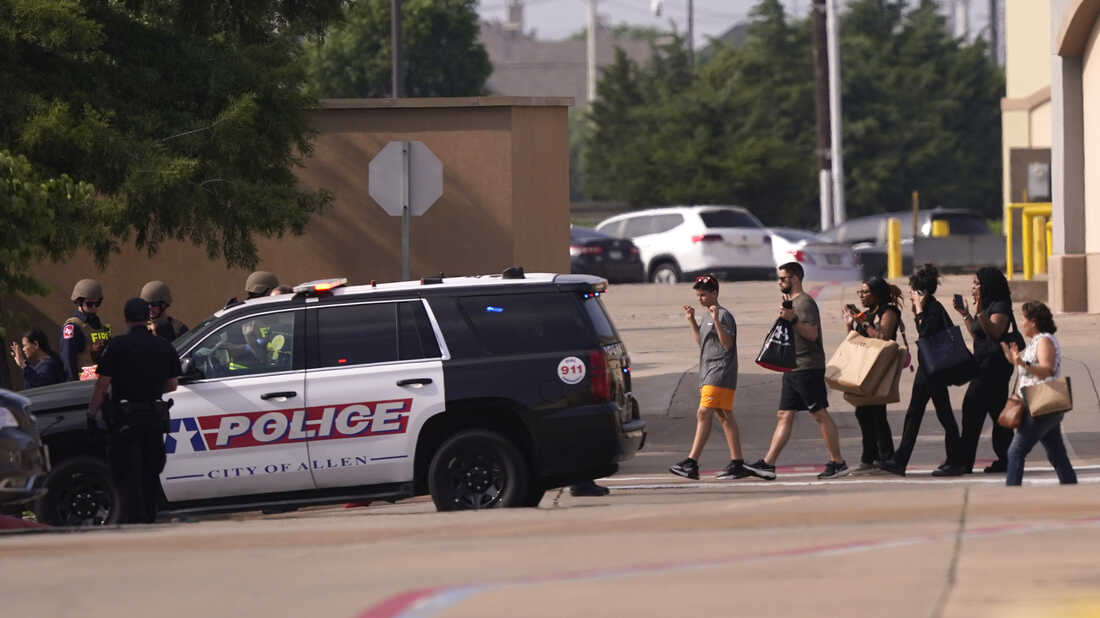You have to be kidding me. In an update tonight, police named the killer as 33-year-old Mauricio Garcia who had been staying in a nearby motel. And he had a “right wing death quad insignia on his clothes”. Lets get some back ground on this person before told its another “White Supremacy” killing. By a Hispanic staying on a hotel…..
The New York Time are Already Saying Its a White Supremacy Shooting
Look at this pic and read below

In the wake of numerous mass shootings across the United States, there has been a growing concern regarding the role of media in perpetuating white supremacy in the context of these incidents. While the relationship between media coverage and the motivations behind such acts is complex, it is essential to critically examine how the media may be contributing to the problem. This article will explore some of the ways in which media coverage may be inadvertently reinforcing white supremacy in relation to gun shootings.
- Desparate Framing of Shooters Based on Race
One significant issue in media coverage of mass shootings is the desparate framing of perpetrators based on their race. White shooters are often described as “lone wolves” or “mentally ill,” while shooters of color, particularly Black and Muslim individuals, are more likely to be labeled as “terrorists” or “thugs.” This framing perpetuates harmful stereotypes, and it has the effect of creating a narrative that white shooters are isolated incidents, while non-white shooters represent a larger threat.
- Selective Coverage and Amplification
Another concern is the selective coverage and amplification of particular incidents over others. Shootings perpetrated by white individuals tend to receive more extensive media coverage, leading to an overrepresentation of white shooters in public discourse. This can contribute to the normalization of white-perpetrated violence and the marginalization of gun violence experienced by communities of color.
- The Focus on Manifestos and Ideology
In many cases, media outlets give significant attention to the manifestos and ideologies of white shooters, which often contain white supremacist rhetoric. This can inadvertently amplify the shooter’s message and contribute to the spread of white supremacist ideas. By focusing on the shooter’s motivations, the media may unintentionally provide a platform for these harmful beliefs to reach a wider audience.
- Sensationalism and the Role of Social Media
The rise of social media has led to an increased emphasis on sensationalism in news reporting. Graphic images and headlines are used to generate clicks and shares, which can lead to a skewed portrayal of events. This sensationalism can contribute to the further entrenchment of white supremacy by promoting a narrative of fear and violence that disproportionately affects communities of color.
- Overlooking the Impact of Systemic Racism
Finally, media coverage of gun shootings often overlooks the role of systemic racism in perpetuating violence. By focusing on individual acts of violence, the media may inadvertently obscure the larger context of racial inequity and the ways in which white supremacy is embedded within institutions, policies, and social structures.
The role of media in perpetuating white supremacy in gun shootings is multifaceted and complex. By critically examining the framing, coverage, and messaging surrounding these incidents, it becomes clear that there is much work to be done in ensuring responsible and equitable reporting. The media has a responsibility to examine its role in this problem and actively work to challenge white supremacy, rather than inadvertently reinforcing it.

